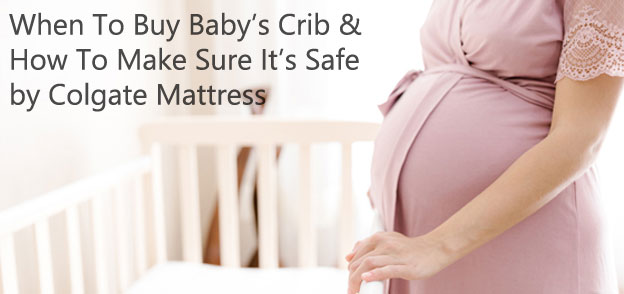Pregnancy can be a confusing time for a first-time mom and the checklist can seem never-ending. Not to mention that you seem to be getting advice from every direction. But, first and foremost, you need to create a safe sleep environment for your baby.
Although you can use a crib right away with a newborn, some parents choose to use a bassinet initially and then transition their infant to a crib after a few months. However, even if you’re not planning on using a crib immediately, it’s recommended to do your crib research during the second trimester — from four months to six months of your pregnancy. During this window, you have plenty of time to shop and set up the crib well before your due date, while you aren’t sleep deprived with a newborn.
How long is a crib used for?
Cribs are usually used for the first two to three years of life. Your baby’s going to spend a lot of time in their crib, so make sure you see it as an investment. This means purchasing one that is built to last, includes a warranty and meets industry health standards, like the cribs handcrafted by our friends at Milk Street baby furniture. You’ll know your little one is ready to move into a toddler bed when they are noticeably too big for the crib and can climb out with minimal effort.
What are the important crib safety considerations?
All baby cribs manufactured after 2011 are required to meet U.S. Consumer Product Safety Commission standards. One of these standards is that the date of manufacture must be printed somewhere on the crib, which makes it easy for parents to ensure it’s up to code.
A few more things new parents should look for in a safe crib.
Side bars: Crib slats or bars should be no wider than 2 3/8 inches apart. The Consumer Product Safety Commission suggests gauging if a soda can would fit through — if so, they’re dangerously far apart. Why? This spacing helps prevent baby from slipping out or getting stuck. Cribs with cutouts on the headboard and footboard should also be avoided for the same reason.
Skip the bumper: The American Academy of Pediatrics has noted the risks posed by bumpers, and there’s no evidence that they make the crib environment safer for baby.
Sturdiness: Make sure the crib doesn’t wobble when you shake it. If it moves it might have been put together improperly. And if the crib is on wheels, make sure they lock in place.
Corner posts: The height of corner posts should not exceed 1/16 of an inch. Anything taller can catch your child’s clothing. Look for any screws or nails that stick out anywhere on the crib.
The importance of a firm crib mattress: The American Academy of Pediatrics, the Consumer Products Safety Commission and First Candle all recommend a firm, snug-fitting sleep surface that reaches every corner of the crib’s frame with no gaps. If more than two fingers fit between the crib and the side of the mattress, the mattress is too small. Mattresses should be dense and not sag under your baby’s weight.
A good crib mattress is essential to keeping your baby protected and comfortable while sleeping. In fact, carefully selecting your crib mattress is one of the most important things you can do as a new parent. Wait to buy a mattress until after you’ve picked out and purchased a crib, because the proper fit is absolutely essential.
Bare is best: There should be no toys, stuffed animals, pillows or blankets inside the crib with your baby. The only bedding they’ll need is a fitted sheet that is suitable for the mattress. If your little one seems cold, use a sleep sack to keep baby warm while sleeping without having the risk of loose blankets that might smother baby.
Cords and strings: Keep the crib away from windows, curtains, cords and anything else your little one can pull. Hanging baby mobiles are okay to use as long as they’re kept out of reach.
Deciding on the right crib is a huge decision that you’ll want to start thinking about by the mid-point of your pregnancy. Not only is it the foundation of the nursery, it also keeps your new addition safe as they slumber away.

